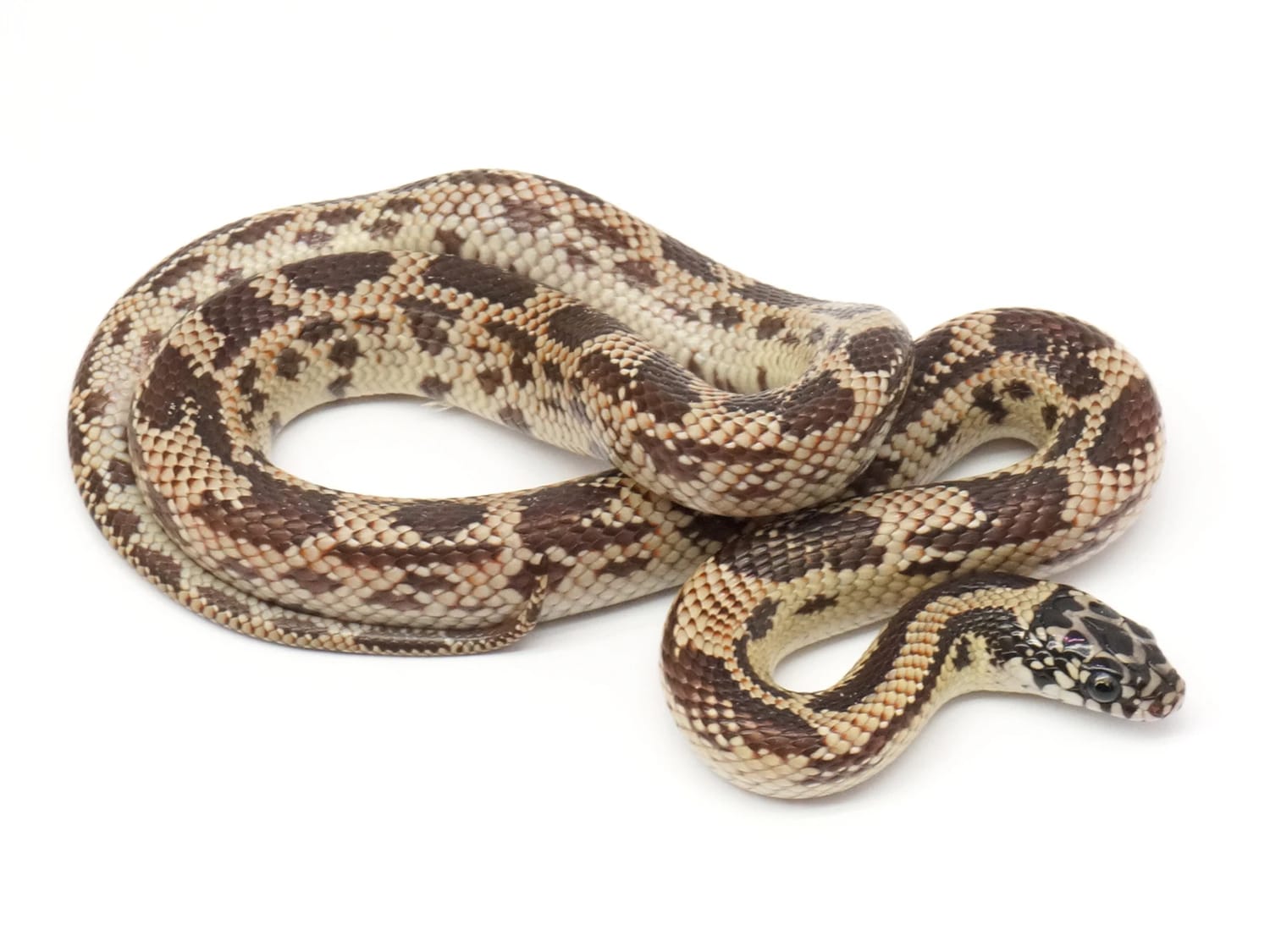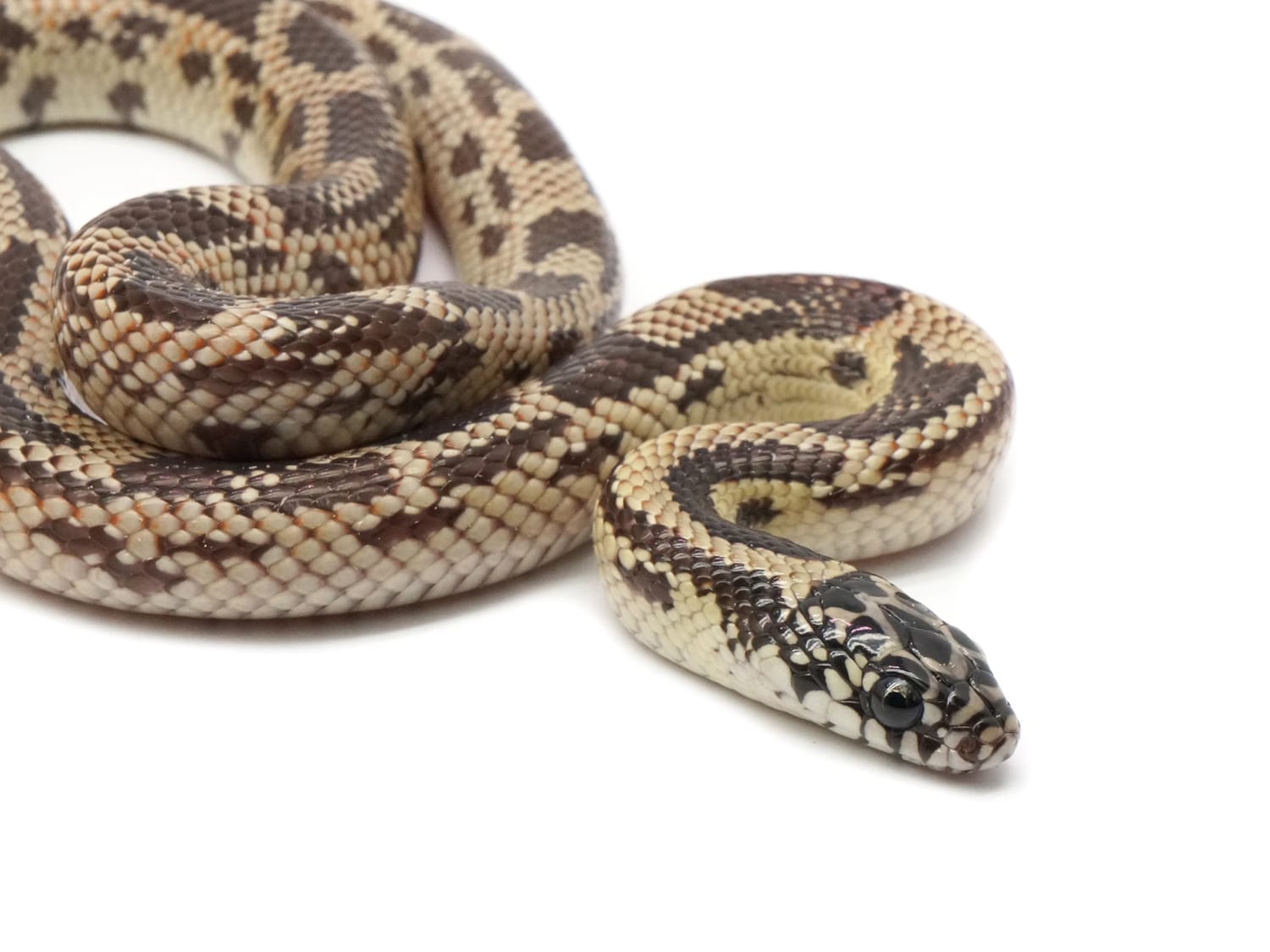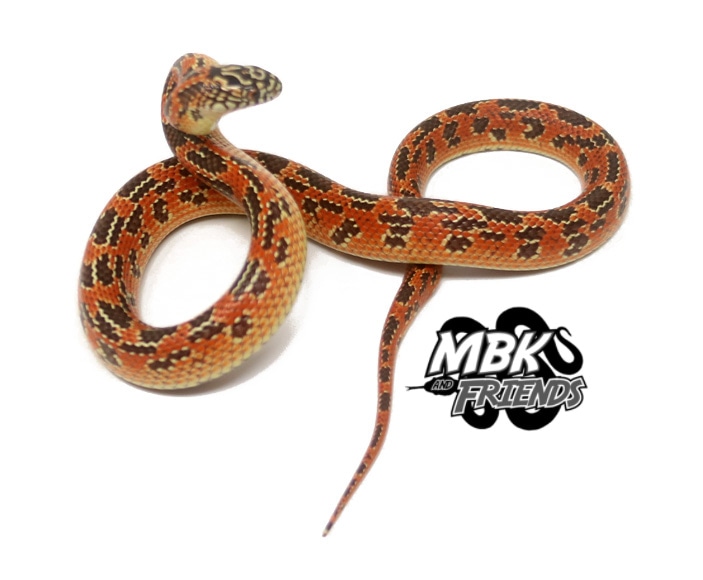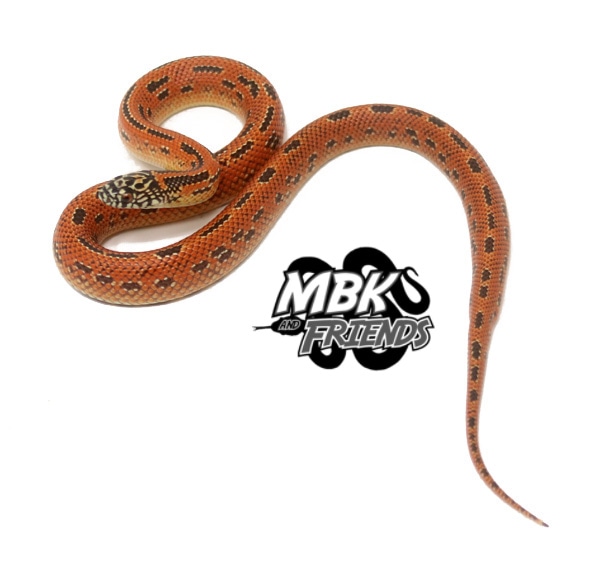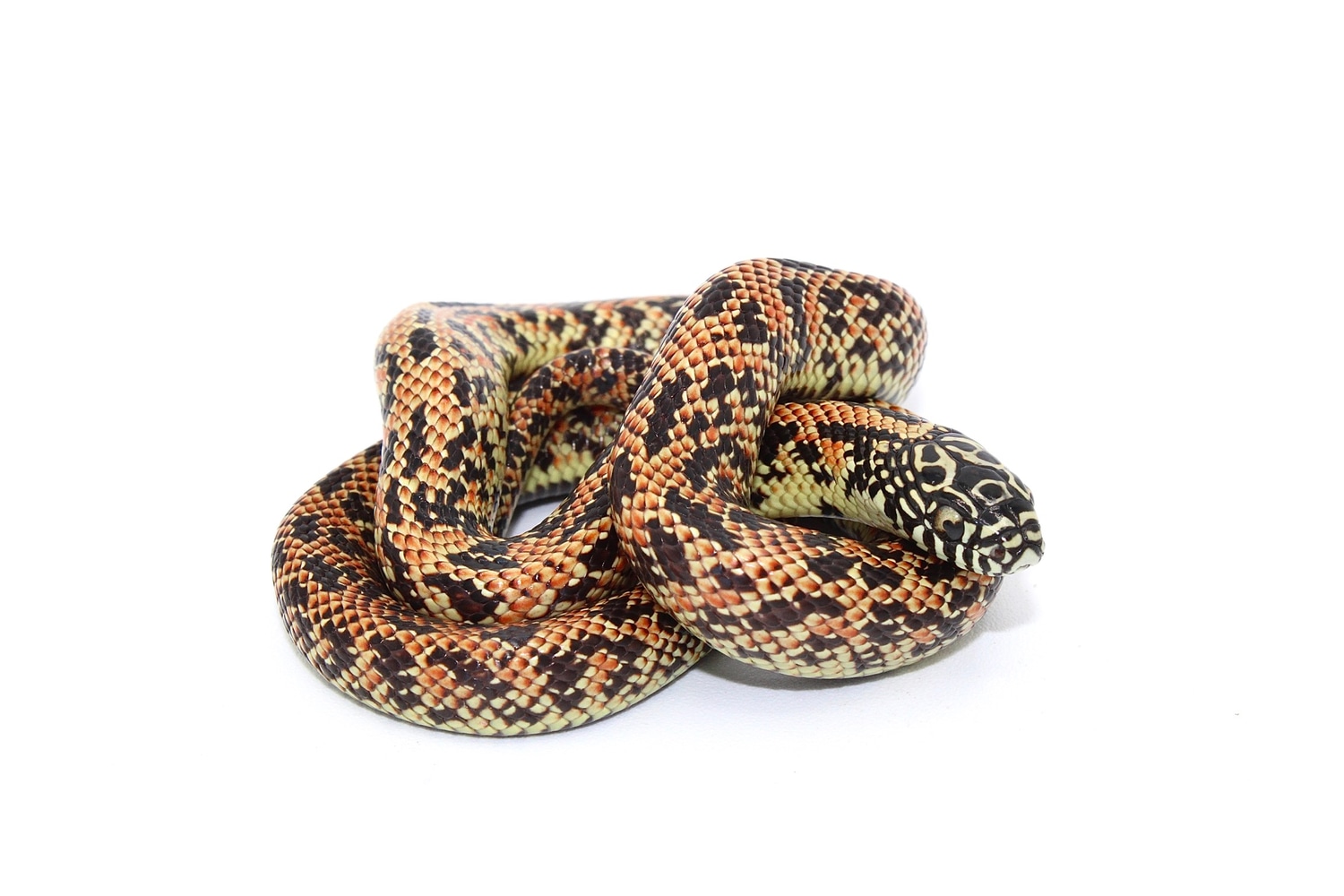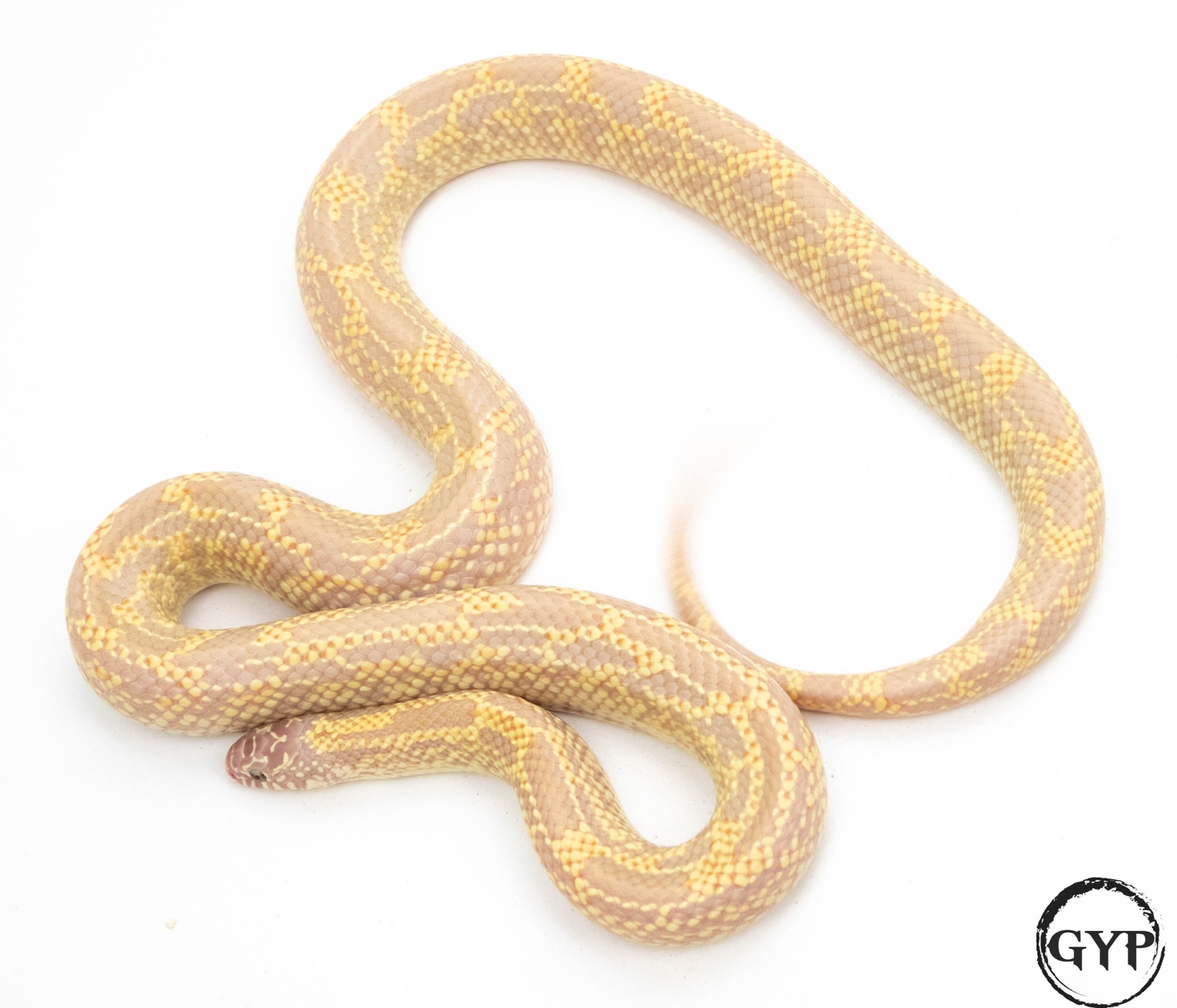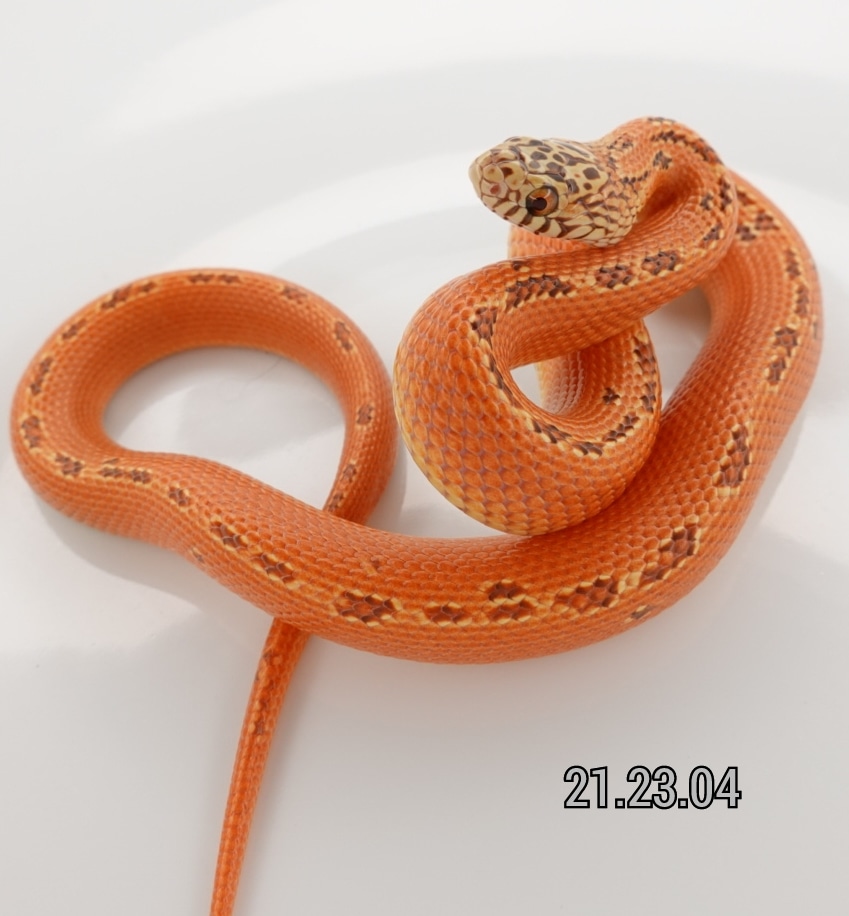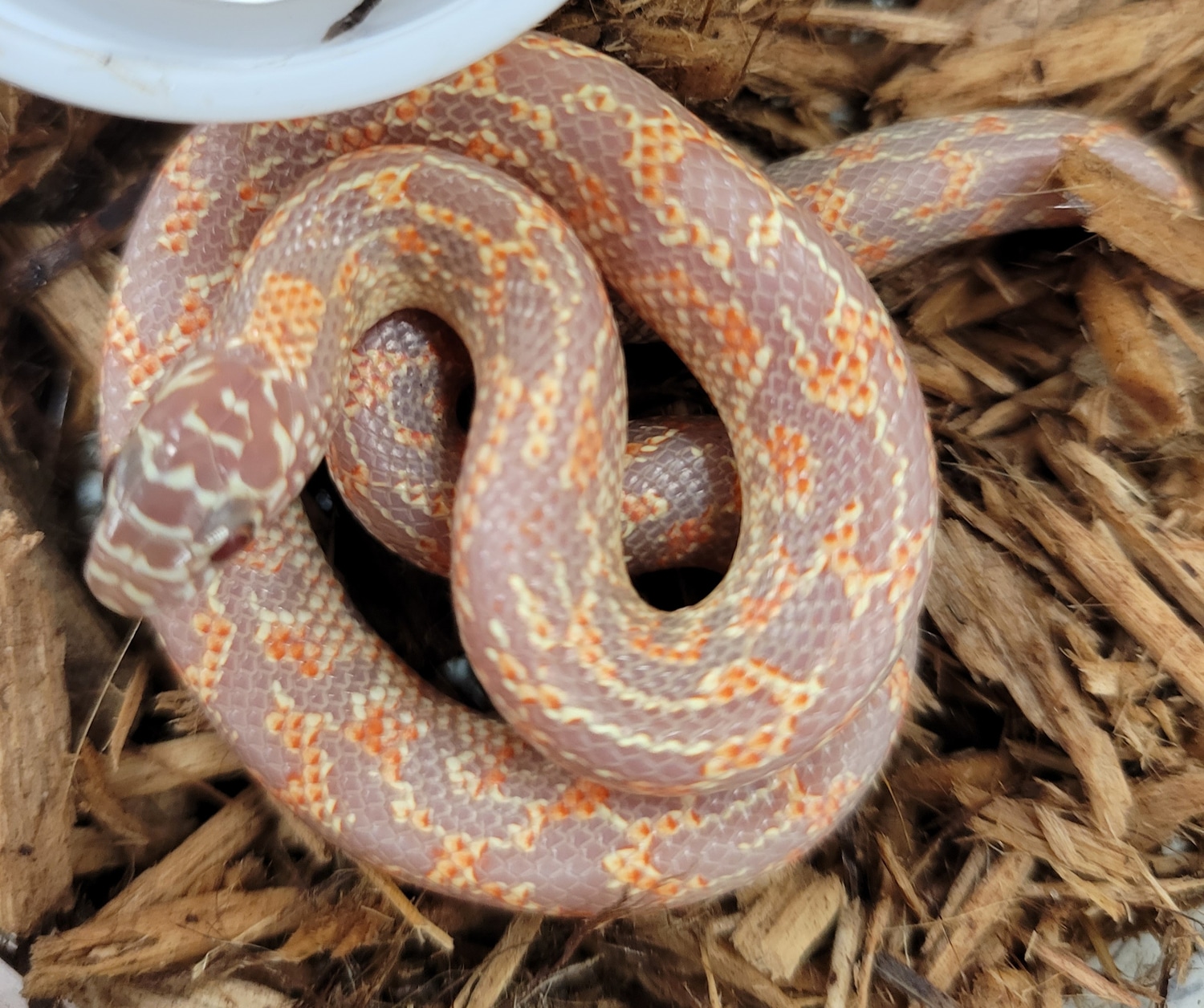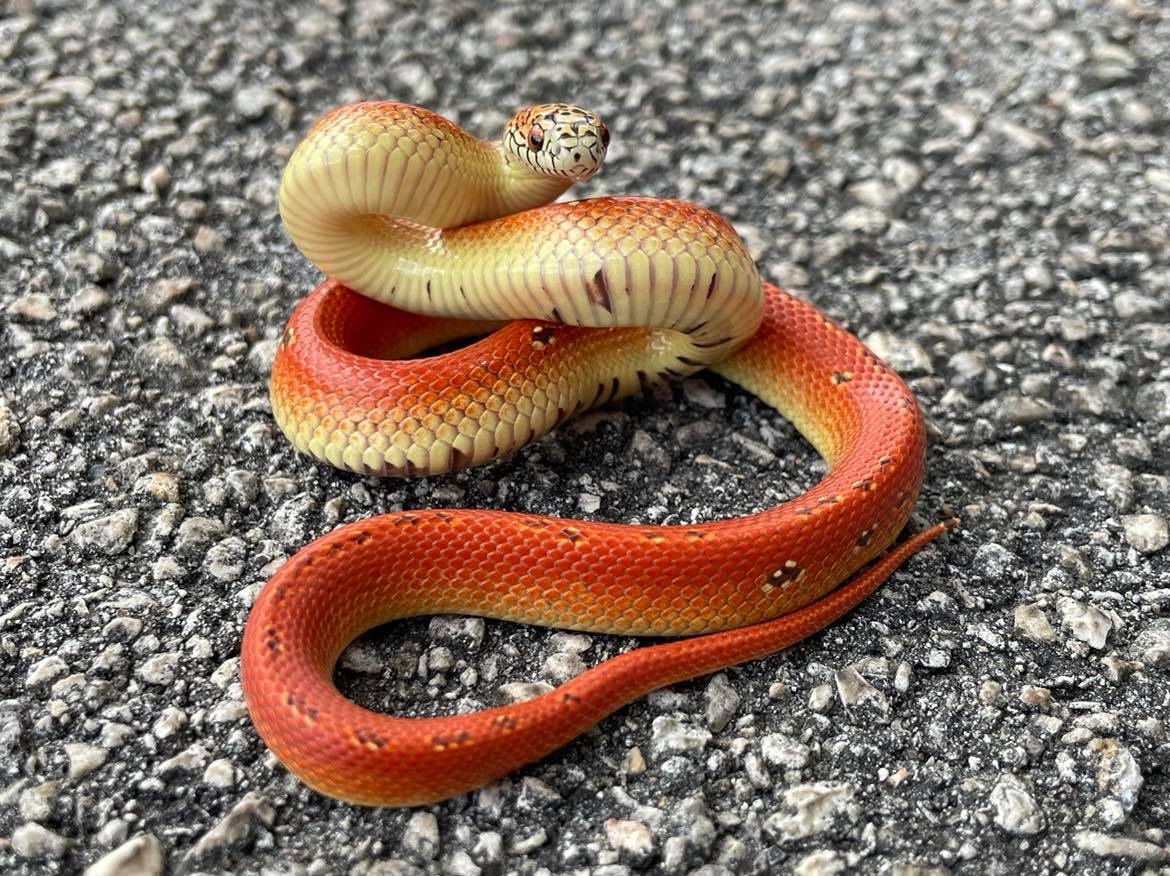Mosaic
Type: Recessive
First Produced By: Gourmet Rodents
Issues: N/A
First Produced In: 1997
Availability: Rarest
Last Updated: 2022-01-07
Do you have any suggestions or corrections for this article?
Click here to contribute feedback
About
Mosaic is a recessive mutation.
History
This highly variable morph was discovered in two separate collections from Cane Field Kings collected in and around the Clewiston area of Central Florida.
One line, which is the predominant line in the hobby today, popped up in a group of Clewiston wild-caught animals in Gourmet Rodents’ colony. Bill Brant, who owned Gourmet Rodents at the time, said they saw the first Mosaics in 2003. They popped out of captive hatched snakes from eggs that were laid by wild-caught females from sugar cane fields south of Lake Okeechobee in 1997. In 1999, when they began breeding this group of unrelated snakes, they saw Axanthics pop up. Then in 2003, the first Mosaics popped up. Knowing that they had siblings to the male, and female Mosaics, they began adding those snakes into the group, and were able to identify others with the gene as well, which resulted in their rapid proliferation.
They bred these Mosaics for many years, and sold plenty of them at all the reptile expos they vended at. They also saw a striped gene, which they called Pinstriped come from this same group of Clewiston Kings.
Gourmet Rodents was probably the first to discover that adding Hypo to the Mosaics would create some amazing variations to an already great looking snake. I’m not sure why they did not pursue this combination in more depth, but I do remember seeing some old pics of them many years ago. Andy Waldo, who worked with the Mosaics at Gourmet Rodents for years, told me he saw many reduced pattern, patternless, and striped animals that were produced from the colony of Mosaics over the years.
A second line popped up in a wild-caught gravid female from the Clewiston area caught by Carl May, and Sean Bellinger in March of 2004. Carl actually caught both gravid females, Sean kept one, and sent the other female to Phil Peak. The female Sean kept laid 8 eggs, 6 hatched, and two were aberrant Mosaics. All the hatchlings were females. Sean sold the project to Lindsay Pike, but since both Mosaics were females, it would take some time to produce more. Before Lindsay could produce the first ones, Gourmet Rodents was already offering babies for sale in 2006.
We can conclude that the Mosaic gene is in fact a naturally occurring morph in certain wild Floridana populations.
Appearance
Proven Lines
Carl May Line
Related Traits
No known related traits
